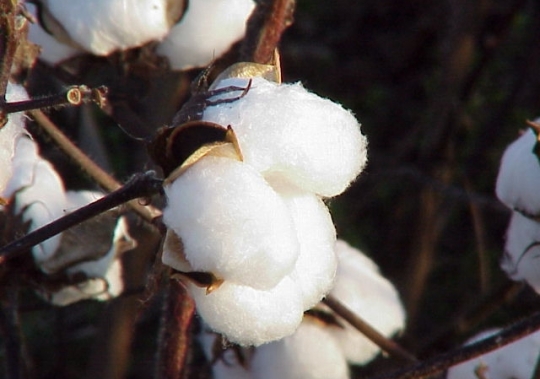
From small beginnings...
23rd March 2014
Behind Our Brand | 0 Comments
Back
We mentioned a couple of weeks ago that our cotton seeds were starting to be planted for next season's cottons.
By Autumn we'll have lovely fluffy white Cotton Bolls, but have you ever wondered how these become the beautiful organic cotton that your tee is made from?
We believe quality starts at the beginning so lets start from there.
There are five prominent types of cotton grown in the world; Egyptian, Sea Island, American Pima, Asiatic and Upland. Cotton is a thirsty crop it takes about 2,700 litres of water to produce one t-shirt and because cotton needs a long, sunny growing period (with at least 160 frost free days) it is generally grown between latitudes of 45 degrees North and 30 degrees South.
Our cotton is classed as 'Gossypium Hirsutum' or Upland cotton and starts life in the luscious GAP area of Turkey which has just the right balance of conditions for some of the world's most sustainable and premium cottons.
When we started designing the perfect white t-shirt we wanted the best and this normally means Pima cotton due its lovely long lustrous staples. The problem is that Pima is difficult to commercially produce without chemical pesticides and fertilisers so does not meet the GOTS [Global Organic Textile Standard] criteria that we work to; but we found another way of making our Upland cotton just as luxurious – not from chemicals but from some rather ingenious mechanical techniques. This is how:
- The buds or Bolls are handpicked, keeping the cotton cleaner and each Boll intact. The nice thing about cotton is that nothing is wasted; seeds are separated for propagation or used for oil and animal feed and the remaining cellulose husks are used to make paper and even plastic.
- The Bolls are collated into huge bales ready for transporting from the fields to our partner Sankos yarn division in local Gaziantep; traditionally each bale is about 230 Kilos/500 llbs which will make approximately 1200 t-shirts!
- On arrival in Gaziantep the cotton is separated and the fibres, husks and seeds all go their different ways. This process is known as Ginning. Once ginned the cotton becomes known as Lint and is baled up again ready for Carding.
- Carding mixes and cleans the cotton further through repeated blowing and beating. The short Lints that come out are usually separated and sold for use in other industries. The best Lint's are fibres of about 4 cm/1.5 inches long which are the fibres that we use.
- The final combing action of Carding finishes the job of cleaning and straightening the fibres, and makes them into a soft, untwisted rope called Slivers. The more combing the straighter and more aligned the fibres are. This is what is called Combed Cotton. These lovely long slivers are now ready for Spinning and twisting into yarn.
- This is when we do something slightly different to our pure cotton. We use a Zeugma® yarn which is created using a new proprietary spinning process. The organic cotton fibres are mechanically aligned and tightly interconnected to form extra long, smooth filaments of up to 7 cm/8 inches – naturally providing the beautiful smooth handle, superior durability and softness of our tees.
The yarn is finally ready to be moved to Corlu in Northern Turkey, ready for dying and to be knitted into the beautiful cottons your tees are made from!
In our next blog post we’ll discuss the ethical measures we take throughout all of these process but in the mean time our Production page tells more about our individual organic cottons. Or if you’d like to learn more about the process and the reasons we choose organic we’d recommend the Soil Association and their Cottoned On campaign.




Comments
To comment you have to have an account with us:
Login / JoinBe the first to comment
It would be great to hear your views, be the first to comment.